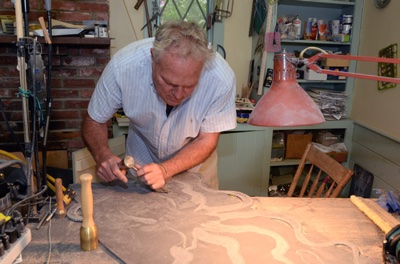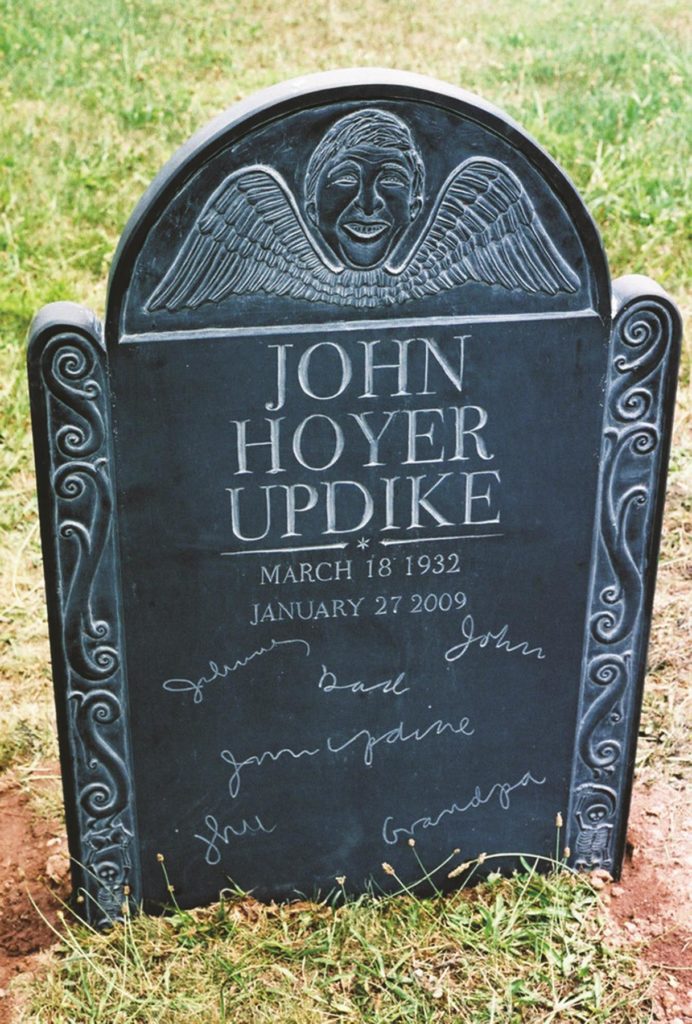If you haven’t been to Plow Church cemetery to see John Updike’s gravestone carved by son Michael, there’s a large photo of it accompanying a Northshore Magazine story about how Updike’s sculptor son changed his artistic course after that gravestone.
 In “Artist Michael Updike Creates Works of Art in Stone,” Robert G. Pushkar (who also took the photos) writes, “After the death of his father, writer John Updike, in 2009, Michael experienced a tectonic shift in his artistic awareness. He set out to commemorate his father’s life in a meaningful and also aesthetically unique way. But first he had to learn the intricacies of gravestone art. Already he had experience carving in granite and marble, but slate required another skill set. He explains, ‘You have to carve in a totally different way.'”
In “Artist Michael Updike Creates Works of Art in Stone,” Robert G. Pushkar (who also took the photos) writes, “After the death of his father, writer John Updike, in 2009, Michael experienced a tectonic shift in his artistic awareness. He set out to commemorate his father’s life in a meaningful and also aesthetically unique way. But first he had to learn the intricacies of gravestone art. Already he had experience carving in granite and marble, but slate required another skill set. He explains, ‘You have to carve in a totally different way.'”
Michael told Pushkar, “In my art I do make death heads and winged skulls as a nod and recognition to the early folk artists of New England . . . . I can tell a carver’s style and feel. We won the American Revolution but looked back toward the neoclassical influence in creating gravestones, instead of the pagan skulls and wings with so much personality. Now you have urns and weeping willows, which are stagnant.”
Since the one he carved for his father, Michael has done a number of gravestones.
“It’s very exciting to me. . . . It takes me to a wide-range gamut of emotion, because I can suddenly be working with a parent who lost a child, or I can be working with very ironic people who want to do their own gravestone before they die. A lot of jokes and humor could be built into it. . . . The journey of getting the stone is what helps them recover and heal. . . . Not completely, but to a certain level where they can move on. There’s a little bit of being a psychoanalyst, a little bit of being a pastor or minister, or just sometimes being a friend realizing their vision.”

